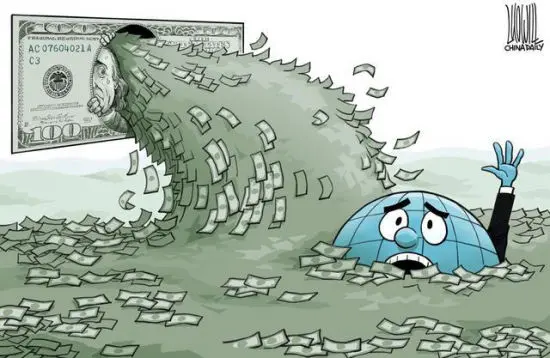Bad credit loans refer to loans that are provided to borrowers with poor credit
records. These loans are typically offered by banks or other financial institutions
to people who have had problems with debt repayment in the past, such as defaults,
bankruptcies, or foreclosures. Bad credit loans can be a lifeline for people who
need to borrow money but have difficulty obtaining traditional loans. However, they
also come with higher interest rates and fees, as well as stricter repayment terms,
compared to regular loans. In this article, we will explore the different types of
bad credit loans, their advantages and disadvantages, and how to apply for
them.
Types of Bad Credit Loans
Secured Bad Credit
Loans
Secured bad credit loans are typically provided by banks or other
financial institutions to borrowers who need to borrow a specific amount of money
and have collateral to secure the loan. The collateral can be any asset that has
value, such as real estate, jewelry, or a vehicle. The advantage of secured bad
credit loans is that they typically have lower interest rates and fees compared to
unsecured bad credit loans. However, if you do not have collateral or sufficient
collateral, you may not be able to obtain this type of loan.
Unsecured Bad
Credit Loans
Unsecured bad credit loans are provided to borrowers who need to
borrow a specific amount of money without any collateral securing the loan. The
disadvantage of unsecured bad credit loans is that they typically have higher
interest rates and fees compared to secured bad credit loans. The advantage is that
they can be obtained more easily and quickly, as no collateral is required. However,
the risk for the lender is higher, as there is no security to fall back on if the
borrower defaults on the loan.
Short-Term Bad Credit Loans
Short-term
bad credit loans are provided to borrowers who need to borrow a specific amount of
money for a short period of time. These loans are typically renewable on a daily or
weekly basis and can be rolled over if necessary. The advantage of short-term bad
credit loans is that they can be obtained quickly and easily without extensive
credit checks. However, the interest rates and fees are usually higher compared to
traditional loans due to the higher risk associated with short-term
borrowing.
Advantages and Disadvantages of Bad Credit
Loans
Advantages
The main advantage of bad credit loans is that they
can be obtained by people with poor credit records who may not have access to
traditional loans. These loans can provide a lifeline for people who need to borrow
money to cover unexpected expenses or bridge financial gaps. Additionally, some bad
credit loans come with flexible repayment terms, allowing borrowers to pay back the
loan in installments over a period of time.
Disadvantages
The main
disadvantage of bad credit loans is the higher interest rates and fees compared to
regular loans. This is because the risk for the lender is higher when providing a
loan to someone with a poor credit record. Additionally, bad credit loans often come
with stricter repayment terms, such as shorter repayment periods and higher monthly
repayment amounts. If borrowers are unable to repay the loan on time or in full,
they may face additional fees and penalties, which can further increase the amount
they owe.
Applying for Bad Credit Loans
Applying for bad credit loans
is generally similar to applying for regular loans. Here are some steps you can
follow:
Research different loan options: Compare different types of bad
credit loans based on their interest rates, fees, repayment terms, and requirements.
Research banks and other financial institutions that offer bad credit loans to find
the best option for your needs.
Gather necessary documents: Prepare all
necessary documents required for the application process, such as identification
documents, income statements, and proof of residence. You may also need to provide
explanations about any past defaults or bankruptcies.
Fill out the
application form: Carefully fill out the application form with accurate information
to ensure your application is processed correctly. Attach any additional documents
or supporting materials required.
Submit the application: Send the completed
application form along with all required documents to the financial institution or
bank that offers the bad credit loan you are interested in. You can either drop off
the application in person or send it via mail or email, depending on their
requirements.
Wait for the response: Once you submit the application, wait
for the financial institution or bank to review your application and contact you
with their decision. They may request additional information or ask you to provide
clarification on some points.
Discuss loan terms: If your application is
approved, discuss the loan terms with the lender, such as the amount you can borrow,
the interest rate, fees, and repayment schedule. Make sure you understand all the
terms and conditions before agreeing to
Best Bad Credit Loans of October 2023
Advertisement
Similar Posts

Quick Money Boost: Earn $1000 in a Week

10 Steps to a Million-Dollar Retirement Plan

Charles Schwab's 7 most explosive mutual funds - transform your investment
portfolio!.

The Top 10 Most Valuable Automobile Brands in the World.

10 of the Best Stocks to Buy for 2023

Is it true that 0 investment has high returns?

There are solutions to overdue loans

Saving money this way is safe<

Buying bank wealth management is not easy to lose money?

How to Make Money as a Teen

12 Best Websites to Make Money Online

Inflation Calculator: See How Much Inflation Is Costing You

7 Best Money Market Funds to Buy for Safety

How to Save Money: 14 Expert-Backed Ways

6 Key Financial Considerations for Unmarried Couples
